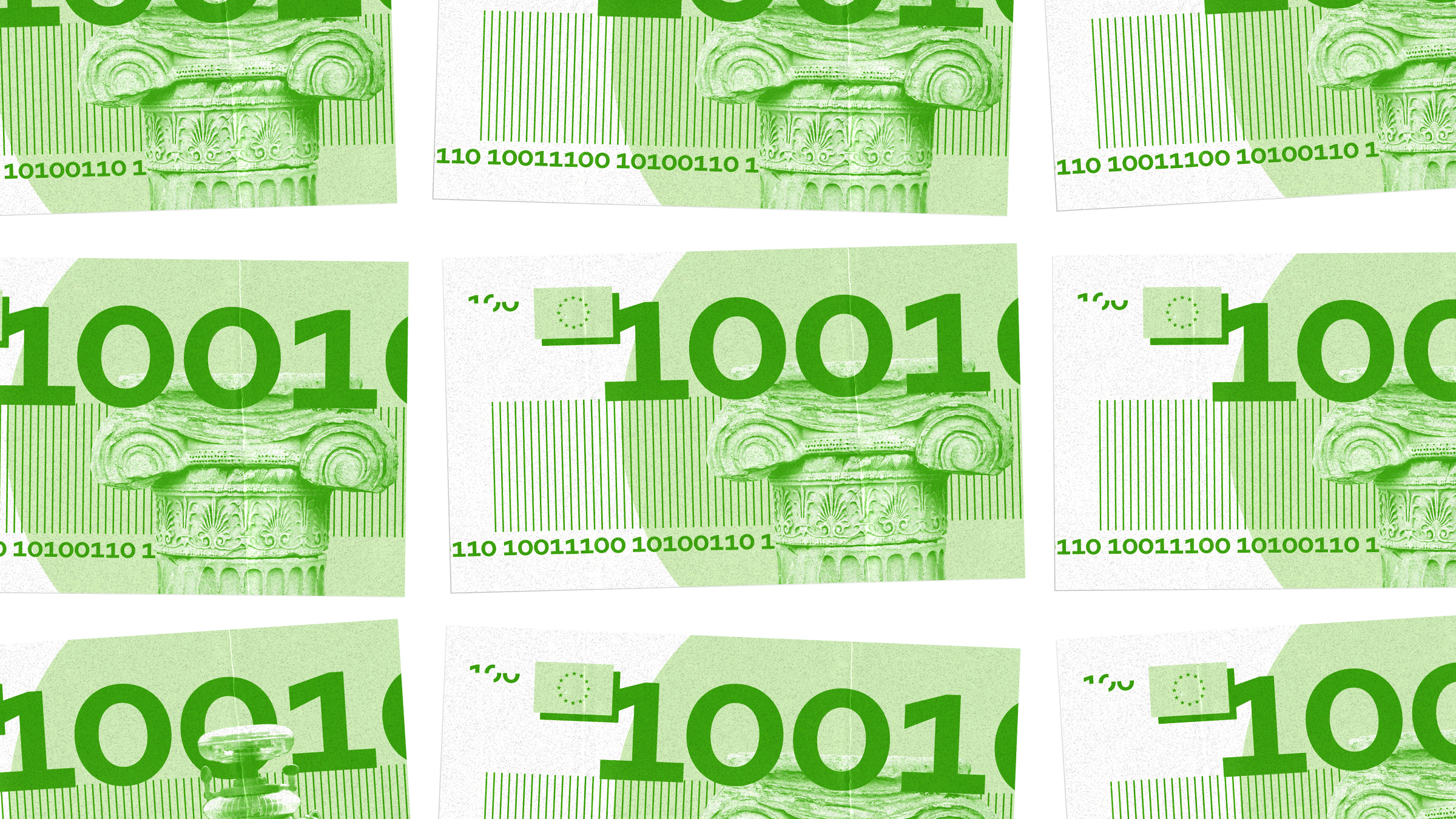Data sharing is expected to unlock value in Europe on an unseen scale. A big part of this value is expected to come from companies with access to data beyond their organisational boundaries. Often when we discuss data sharing we mean open data sources and data being shared freely among companies without charging for it. However, data sharing can be both, free of charge but also monetised.
In the European Data Strategy (2020), the consultancy agency IDC estimated the size of the Finnish data economy to reach Eur 1.3 billion by 2025. The IDC study concluded that the amount of companies using data in their operations in Finland is above the EU average but Finland lags behind its peers in the area of companies monetising their data.
This article aims to prompt discussion on the topic by reviewing the basic concepts and ways of making money from data.
Data economy beyond platforms
Traditionally, data is either used internally or externally by a business. Within a company data is used for data-driven decision-making on such things as sales, marketing and operations. External use happens when data is sold to users in the same sector or to different industries.
In recent years, the platform economy led by Meta, Apple, Amazon, Netflix, and Google has made personal data and data products more accessible to businesses. However, the platform economy is mostly about centralised and monopolised networks, the so-called walled gardens.
The current platform economy has shown the world how data can be gathered, processed and monetised – where the value is captured to profit a few. At Sitra, we believe that the main potential of the data economy will be unlocked when data is used across organisations and the rules for sharing and accessing data are fair.
1. What do businesses sell in data economy?
Essentially businesses in the data economy do one of the following:
- Sell raw data
- Sell analysis or insights
- Sell products or services that are built using data
Regardless of the type of business, it is crucial to have in place relevant policies and adhere to existing data protection regulations in vigour, throughout the different steps from data gathering, to development of data products, to commercialisation.
2. What are the business models in the data economy?
The most well known business models for data-based products or services are:
- Transaction model
- Subscription model
- Aggregation model
- Freemium model
- Advertisement model
The transaction model is where companies or consumers pay a one-off fee for having access to data, rather like when you download an address list, book or document. This model is also used by data brokers that sell databases of users’ information, such as demographic, consumption receipts and others.
The subscription-based business model charges customers a recurring subscription revenue for access to products or services. Software-as-a-Service (SaaS) is a common subscription-based model where data-based products are sold as software-as-a-service. These data-based products often use personal data to create a custom experience, tailored to each customer. For example, Netflix tracks the shows you watch to recommend other content based on your preference.
The aggregation model requires an aggregation of data from multiple sources. An example of this model is of organisations that provide data access to developers that are creating data-based software or products. They provide a platform for developers to extract data while ensuring compliance at the backend. This model aims to allow developers to analyse data freely without breaching privacy regulations by managing consent, aggregating and anonymising the data. There are currently privacy concerns related to this model. Examples of such business-to-business services include Factual and Localeze, and to a certain extent we can consider Google, Facebook, and Twitter as such data aggregators.
The freemium business model offers free products or services with limited features and charges users a premium for additional features. An example of a freemium business model that monetises data is Spotify. Spotify leverages user data to customise the user experience and encourage users to subscribe to its premium version.
The advertising business model offers services to consumers without payment. However, consumer data or insight is sold to a third party for onsite advertising purposes or targeted marketing. The advertising model is the most common data monetisation model used by global technology companies that have amassed a large user base, such as Meta, and Apple is building its ads ecosystem. Currently this model is being scrutinised and in a recent ruling European Union privacy regulators (the European Data Protection Board and Ireland’s Data Protection Committee) deem that personal data collected for targeted ads without users’ explicit consent as illegal, as in the case for Meta.
3. What pricing approaches exist?
Any appropriate business model in the data economy would rely on the product features, pricing or monetisation approach, and how data would be used.
The monetisation or pricing approach of a data-driven business could be:
- Availability based
- Data based
- Usage-based
- Performance-based
- Value-based
Availability-based monetisation is where the provider of a software, service or data product charges users for the availability of the service regardless of whether or not it is used. This could be done through product, license or service sales, and the time of availability can be measured and documented by the system. An example involves services that can be accessed via an application programming interface (API) where the uptime and response time are guaranteed.
Data-based monetisation is where a customer pays only for tailored or custom data. This may include data enrichment such as meta-tagging or data aggregation. For example, a retailer of weather sensors charges for the weather data generated by the sensors instead of for the sensor’s hardware – shifting it from hardware sales (transaction model) to become a “Sensor-as-a-Service” (subscription model).
Usage-based monetisation is when a customer pays for the usage of a software or service instead of for its availability. Usage can be measured by the system through successfully executed commands or completed transactions. For example, with a news site or online magazine users are charged based on the number of articles they access.
Performance-based monetisation is when a customer pays for the performance of the service. Unlike usage-based monetisation, performance-based monetisation is typically based on predefined agreements where usage or access to capabilities (such as functionality) is limited to what has been agreed. Any additional usage, access to additional capabilities or higher performance are charged separately. For example, a company pays for a predefined number of operations of a production machine during a certain period, or a consumer pays extra to boost the speed of their internet connection during peak time.
Value-based monetisation is when a customer pays for a value that could be financial gain, functional or even emotional outcome received. However, some value streams created in data ecosystems may not be directly chargeable, or it may be difficult to find applicable charging metrics as the value could be created by other stakeholders within the ecosystem.
4. The type of product or service features
The monetisation approach is often enabled by the features of the product. This could include:
- The collection and supplying of data. Where data is gathered and sold.
- The storage and hosting of data. Where the data is stored on behalf of others.
- The filtering and processing of data. Where problematic data fields are cleaned or curated.
- The enhancement and enrichment of data. Where datasets are blended to create a new data base.
- The simplification of access to data. Where user can select the data type and format they prefer.
- The obscuration of data. Where data is hidden, obscured or deleted to prevent others to access.
- Consultation and advice. Where data is transformed into insights to guide others.
Defining the business model through iteration
Often, the business model of established businesses is clear and some even combine different product features and monetisation approaches. But for new startups the business model design process often involves testing and validation. This often involves the development of a new product, service features and an approach to monetisation.
This iterative process is combined with customer discovery and development work, to get to a product-to-market fit. The process would be different depending on whether the business is developing a product or services for an existing, re-segmented, new or clone market.
Existing and re-segmented markets can be gauged or measured with traditional tools. However, each of these four market types has different sales models, sales cycles, capital requirements and adoption rates. So it is important to consider this as you set out to understand and select the right business model for your next data-sharing project.
Are you interested in business development through sharing data with other companies and organisations? Find out more about our ongoing funding call.

